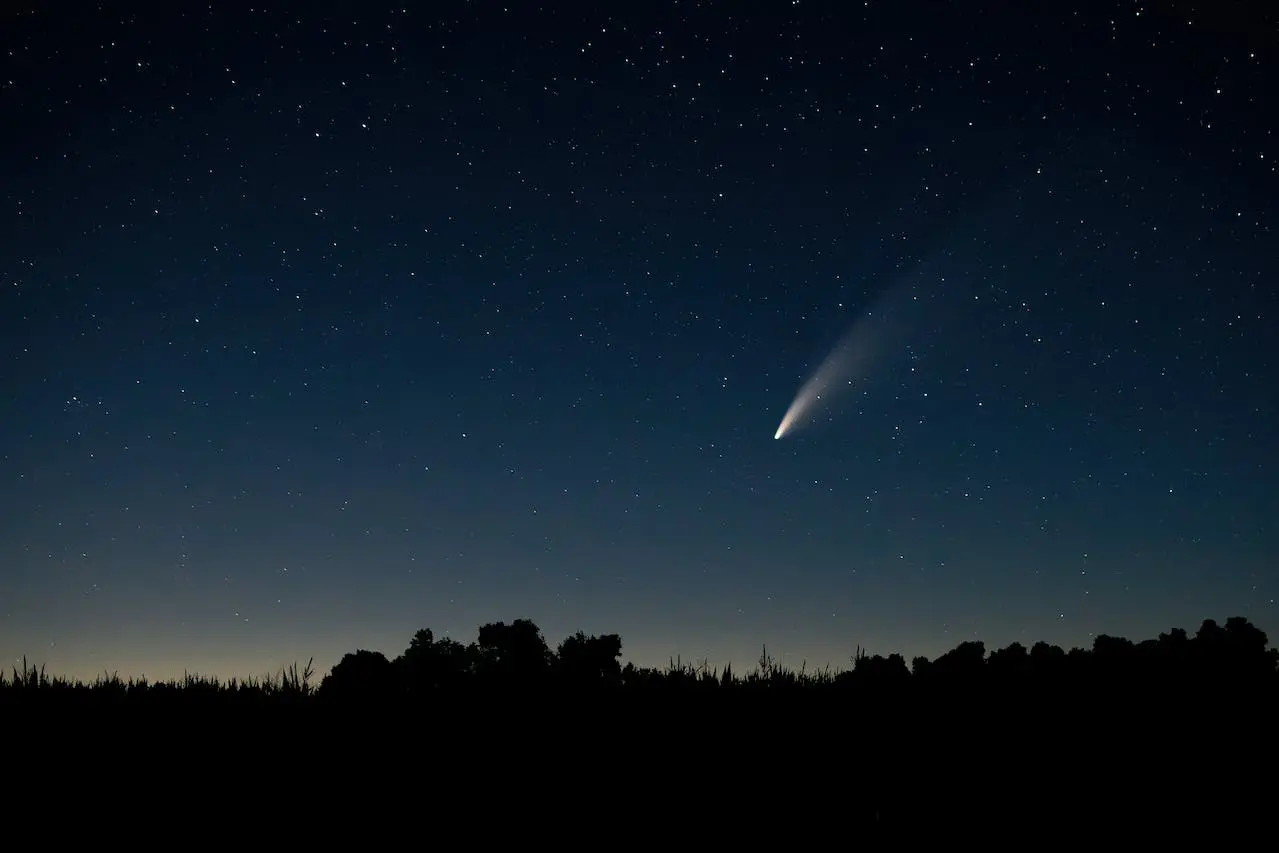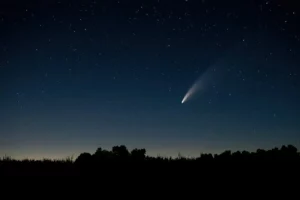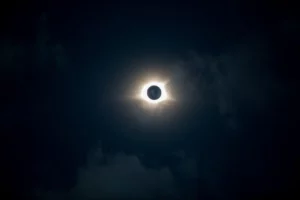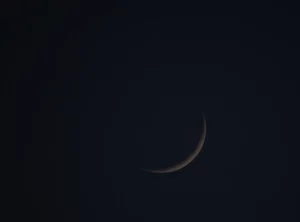
Comet ISON (C/2012 S1) – Facts & Information
1. First things first: What exactly is a comet?
Comets, often referred to as “dirty snowballs”, are bodies composed of ice and dust, which measure only a few miles across. We normally think of a comet as having three parts. The head of the comet consists of the coma and the nucleus. Sweeping away from the coma is the comet’s tail, which can often be as long as the distance from the Earth to the Sun (almost one hundred million miles!).
When the comet is away from the Sun, the nucleus is all there is, and the comet is too small and too faint to be seen. As it approaches the Sun, the nucleus becomes warmer and ices inside evaporate, carrying also the dust that was embedded within. This is what makes up the comet’s coma. Because the Sun’s radiation pressure and the solar wind exert a force on the coma, a gaseous tail is formed, pointing directly away from the Sun.
2. From where does Comet ISON come?
The comet comes from the Oort Cloud, a swarm of frozen ice and rocks orbiting the Sun at a distance of about one light-year. The cloud may contain up to a trillion comets, with a total mass of more than the mass of Jupiter.
Because at some point another cometary body in this cloud passed near ISON, it caused it to change its path, plunging the comet toward our inner solar system.
3. Who discovered Comet ISON?
The comet was discovered on September 21, 2012, via images taken with a 16-inch reflector telescope that is part of the International Scientific Optical Network (ISON). This is a group of observatories specialized in finding asteroids and space debris, with facilities in ten countries.
In the wee morning hours of that day, Vitali Nevski and Artyom Novichonok were recording images in the constellations Gemini and Cancer. They were using the 16-inch reflector at Kislovodsk Observatory in Russia, part of the ISON network. After running the images through CoLiTec, software used to detect asteroids and comets, Nevski spotted the object now known as ISON.
Novichonok explains: “We could not be certain that it was a comet, because the scale of our images is very small, and the object was very compact.” Other observers at the International Astronomical Union’s Minor Planet Center in Cambridge, Massachusetts, soon confirmed the discovery and announced it on September 24.
When first sighted, Comet ISON was 625 million miles (one billion kilometers) from the Earth and glowed at magnitude +18.8. This is a scale used by astronomers to measure the brightness of objects in the sky (the lower the number, the brighter the object). A magnitude of +18.8 means that at the moment of discovery the comet was about 100,000 times fainter than the dimmest star visible with the naked eye!
4. Why is the comet named ISON and not Nevski-Novichonok?
Comets are usually named after their discoverers, but because the initial report from Nevski and Novichonok did not indicate a cometary appearance for this object, and other observers confirmed its cometary nature, the comet was generically named “ISON” (after the telescope network used to discover it).
The comet’s formal designation is C/2012 S1. The letter “C” shows that ISON is a non-periodic comet, 2012 is the year of discovery, and the upper-case “S” indicates the half-month when it was discovered. The “1” after the letter “S” is just a sequential number.
How close did Comet ISON come to Earth? And to the Sun?
On its closest approach, the comet passed within 39 million miles (63 million kilometers) from Earth on December 26, 2013. This was 42-percent of the Earth-Sun distance. ISON posed no threat to our planet, and even when the comet broke up into fragments, these continued along the same safe trajectory as the original comet. All we had to do was sit back, relax, and enjoy the celestial show. Comet ISON did not come remotely close to us!
ISON was a sungrazing comet, meaning that its orbit brought it very close to the Sun. It reached perihelion on November 28, 2013, at a distance of only 1.1 million miles (1.8 million kilometers) from the center point of our star. After Comet ISON’s close encounter with the Sun, it emerged glowing as brightly as the Moon and was easily visible near the Sun in broad daylight.
I hear that Comet ISON passed very close to Mars. Was this true?
Yes, on its way to the Sun, Comet ISON first passed very close to Mars. On October 1, 2013, ISON was only 6.7 million miles (10.8 million kilometers) from the Red Planet. At that time, it was visible to rovers and orbiting spacecraft, becoming the first comet in human history to be observed from more than one planet. Mission controllers at NASA’s JPL did try to observe it with the cameras onboard the Curiosity and Opportunity rovers. Updates were provided back then.
How fast did Comet ISON move across the night sky?
Many people who have never seen a comet commonly assume that a comet streaks across the sky at great speed, in the direction opposite to its tail. In reality, when observing a comet in the sky, there’s no rapid motion at all.
Comet ISON appeared to stay in the same place among the stars, having only the motion across our sky caused by the rotation of the Earth. It did move among the stars, of course, but its motion was observed only over a few days.
As a consequence of Kepler’s second law, Comet ISON’s orbital speed varied according to its distance from the Sun. A comet moves faster and faster as it approaches the Sun, because the closer an object is to the Sun the stronger the Sun’s gravity acts on it.
For example, in mid-2013, ISON traveled at around 50,000 miles per hour (80,000 km per hour). At perihelion on November 28, in contrast, it moved at an astounding 425,000 miles per hour (680,000 km per hour).
What is the size of C/2012 S1 ISON?
Observations with NASA’s Swift space observatory in late January 2013 and with the iconic Hubble Space Telescope in April 2013, suggest that C/2012 S1’s nucleus (the solid, central part of the comet, composed of rock, dust and water ice) is 3 miles (5 km) in diameter.
Most comets are no more than 10 miles (16 km) across, so ISON is just the typical size for a comet. When it comes to a comet’s brightness at perihelion, the diameter is not very important.
What matters most is how much dust and gas the comet produces and how close it approaches to the Sun. Many spectacular comets in the past had nuclei much smaller than Comet ISON’s. Perfect examples are Comet Lovejoy, which was just 400 feet (120 meters) across, or Comet Hyakutake, 2.6 miles (4.2 km) in diameter.
Is there any link between Comet ISON and the Great Comet of 1680?
Soon after Comet ISON was discovered, astronomers noted that its preliminary orbit had an exceptional similarity with that of the Great Comet of 1680 (formal designation C/1680 V1). Many suggested that the two comets have a common origin and are perhaps fragments of a much larger object, which disintegrated at some point in the distant past.
However, this remains just speculation. Even though both comets have almost identical inclinations (angles with respect to the ecliptic) and small perihelion distances, their orbital eccentricities (amounts by which the orbits around the Sun deviate from a perfect circle) are fundamentally different.
The Great Comet of 1680 has an elliptical orbit, and comes close to the Sun every 10,000 years. Comet ISON, on the other hand, moves on a hyperbolic orbit and makes a single pass into our inner solar system. After its (hopefully) spectacular display in November and December, it will return to the deep freeze of interstellar space, never to be seen again.
Could C/2012 S1 ISON create a meteor shower?
In mid-January 2014, our planet will pass near the orbit of Comet ISON, and probably through a stream of micron-sized debris left behind by the comet. Some suggested that this encounter brings up the possibility of a meteor shower; however, this is very unlikely.
Most meteor showers occur when the Earth intersects the debris trail of a comet; for instance, the Perseids in early August are associated with Comet Swift–Tuttle, which has a period of 133 years and last returned to perihelion in 1992. The catch is that the Earth actually has to cross a comet’s tail.
On January 14th and 15th, 2014, the Earth does not move through Comet ISON’s tail, it only passes briefly close to its orbit. Assuming that cometary debris is present in ISON’s orbit nearly one hundred days behind the nucleus, the extremely tiny grains of dust will hit the Earth’s upper atmosphere at 35 miles per second (56 km per second).
However, because they are so small, the atmosphere will rapidly slow them to a stop. Instead of burning up in a flash of light, triggering so-called “shooting stars”, they will just drift down to the Earth’s surface.
This invisible rain of comet dust will be so slow, that it will take years for the fine particles to settle out of the high atmosphere. Noctilucent (literally meaning “night shining” in Latin) clouds above the Earth’s polar regions may form from the debris, but only if a significant amount of dust will enter the Earth’s atmosphere. This is also unlikely, as no such events are known to have taken place when Earth has crossed the orbits of other comets under similar circumstances.
Astronomers have looked in vain for meteor outbursts from other great comets in the past, and meteor showers from one-pass comets coming from the Oort Cloud are very rare. Well-known annual showers are produced by dust ejected from short-period comets, decades or centuries before.
Was Comet ISON visible from Australia and the Southern Hemisphere?
For those in the Southern Hemisphere, Comet ISON was visible low in the morning twilight in the months leading up to its closest approach to the Sun. However, it wasn’t observable during its peak in December.
In the months of August, September, and October, the comet was seen just above the northeast horizon shortly before sunrise. The best opportunity for observers in the south was around mid to late November when the comet was visible to the naked eye, low in the eastern sky at dawn. If ISON had developed a bright tail, it would have pointed upwards, away from the Sun.
On the day of its closest approach to the Sun, observers could potentially see ISON in broad daylight, although it was very close to the Sun.
After its closest approach, as the comet moved closer to Earth, it set before sunset and rose with the sunrise. From that point, it was only visible from locations in the Northern Hemisphere.

Emil, an avid astronomy writer, formerly owned and ran nightskyinfo.com, making the universe more comprehensible for his readers. He has recently handed over its reins to Tom Urbain from starlust.org, ensuring that his legacy of simplifying the stars continues to enlighten and inspire.
Discover More Deep Sky Objects to Observe🔭
This page is part of our collection of stargazing guides. If you enjoyed the read, then you’ll love the following articles.




